Looking to close your customer account can be a significant decision, and understanding the process is key. In this article, we'll guide you through the essential steps and considerations to ensure a smooth closure journey. We'll also touch on how to handle any outstanding balances and what this means for your future transactions. So, let's dive into the details and empower you with the knowledge you needâread on to discover more!

Company Information (Name, Address, Contact Details)
Company XYZ, located at 123 Main Street, Suite 456, Cityville, State, ZIP, offers a range of services tailored to customer needs. This company provides a direct contact number at (555) 123-4567 and maintains an email at support@companyxyz.com for customer service inquiries. Company XYZ is dedicated to ensuring customer satisfaction and security. Any inquiries regarding account closure procedures, policies, or potential consequences, such as data retention or final billing adjustments, can be addressed through these contact methods. The closure of accounts may impact access to digital services and ongoing subscriptions associated with the customer's profile.
Customer Details (Name, Account Number, Contact Information)
Customer account closure requires a comprehensive understanding of financial and personal details. The customer name represents the individual's identity associated with the account, while the account number serves as a unique identifier, essential for processing requests efficiently. Contact information, including phone numbers or email addresses, ensures open channels for communication during the closure process. Businesses must adhere to relevant regulations, such as the General Data Protection Regulation (GDPR) in Europe, to ensure sensitive customer information is handled securely. Any outstanding balances or services associated with the account must be resolved prior to closure, ensuring a seamless transition for both the customer and the organization.
Closure Request Statement (Explicit Request, Effective Date)
A customer account closure statement serves as a formal notification to initiate the termination of a specific account. This request should clearly mention the account identifier, such as the account number or customer ID, to ensure accurate processing. Additionally, specifying the effective closure date, generally recommended as 30 days from the date of submission, allows for any final transactions or outstanding balances to be settled appropriately. It may also include the reason for closure, which can assist the service provider in improving future customer experiences. Addressing the closure request to the appropriate department, either customer service or account management, further facilitates a streamlined process, ensuring that necessary protocols are followed diligently.
Final Settlements (Outstanding Balance, Refunds, Final Statement)
Final account settlements are crucial for customers wishing to close their accounts, ensuring clarity on any outstanding balances. An outstanding balance signifies any unpaid amount, which must be addressed prior to closure to prevent future financial discrepancies. Refunds, often associated with overpayments or cancellations, need to be processed before account finalization, ensuring customers receive any owed funds. The final statement serves as a comprehensive record summarizing transactions, balances, and refunds conducted during the account period, providing transparency and accountability. This end-of-account process aims to protect consumer rights while fostering trust in financial institutions.
Contact for Assistance (Customer Support Details, Follow-up Actions)
Customer account closure occurs for various reasons, often involving the finalization of services or dissatisfaction with customer experience. It is essential for companies to communicate effectively with clients during this process. Customer support details may include contact numbers (such as a toll-free number like 1-800-123-4567) and email addresses (like support@company.com) which provide a direct line for assistance. Follow-up actions such as confirming the closure via email and informing clients about the timeline for final transactions (usually within 5-7 business days) are crucial. Companies should also remind clients of any outstanding account balances or remaining services to ensure a smooth transition.

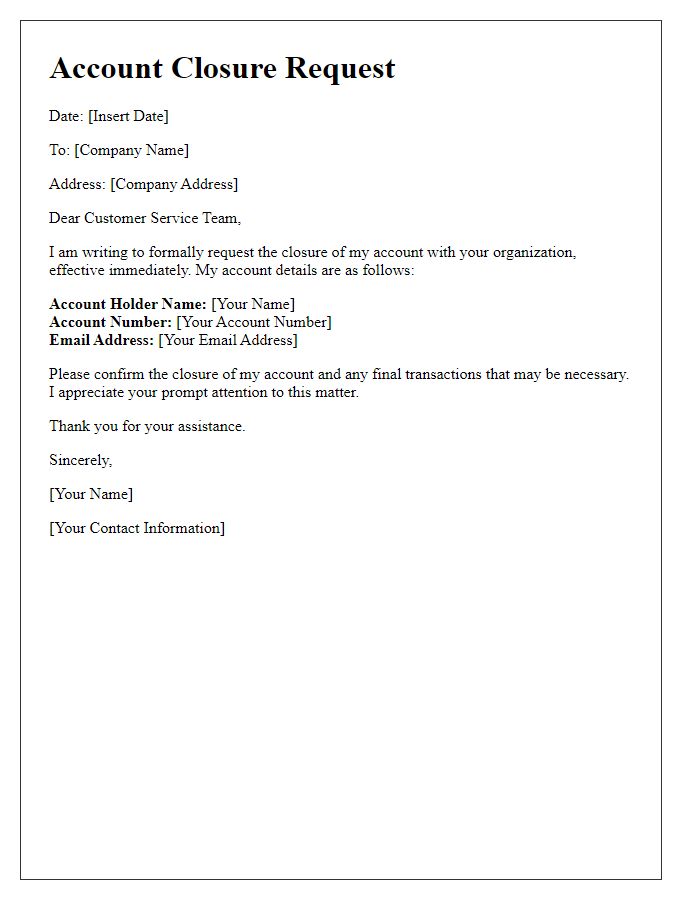
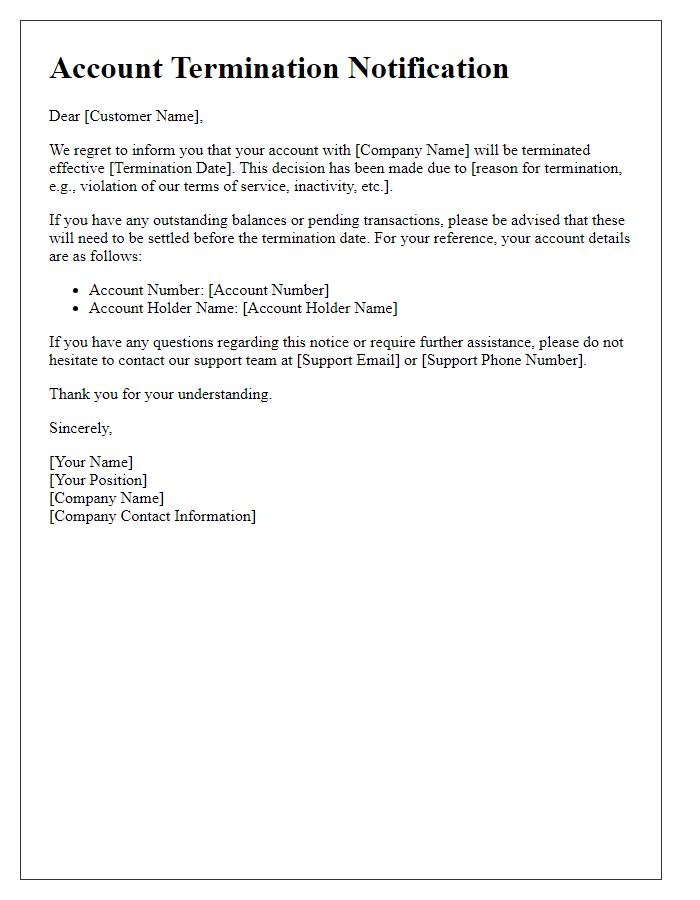
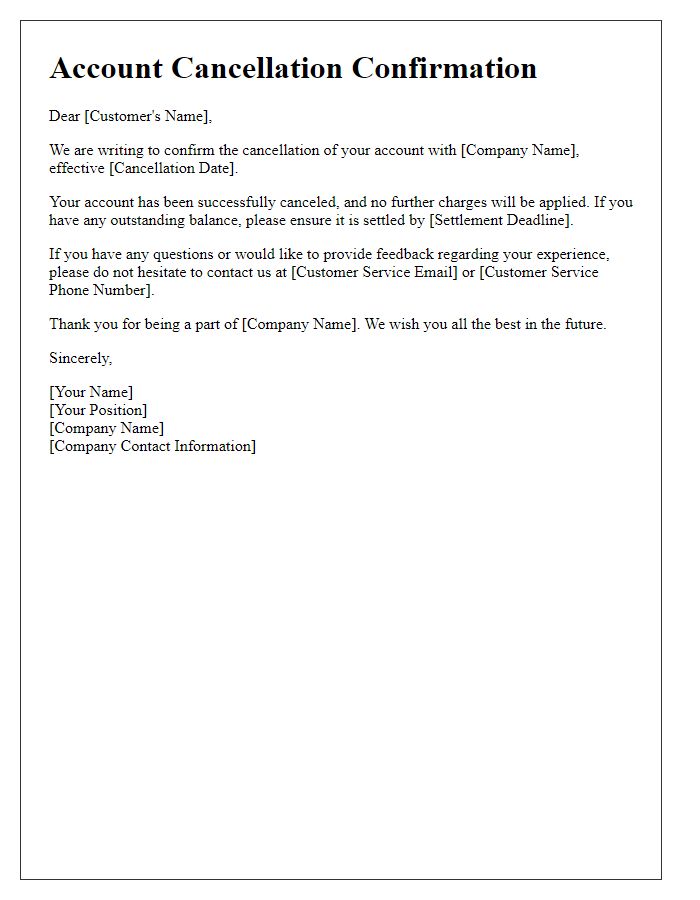
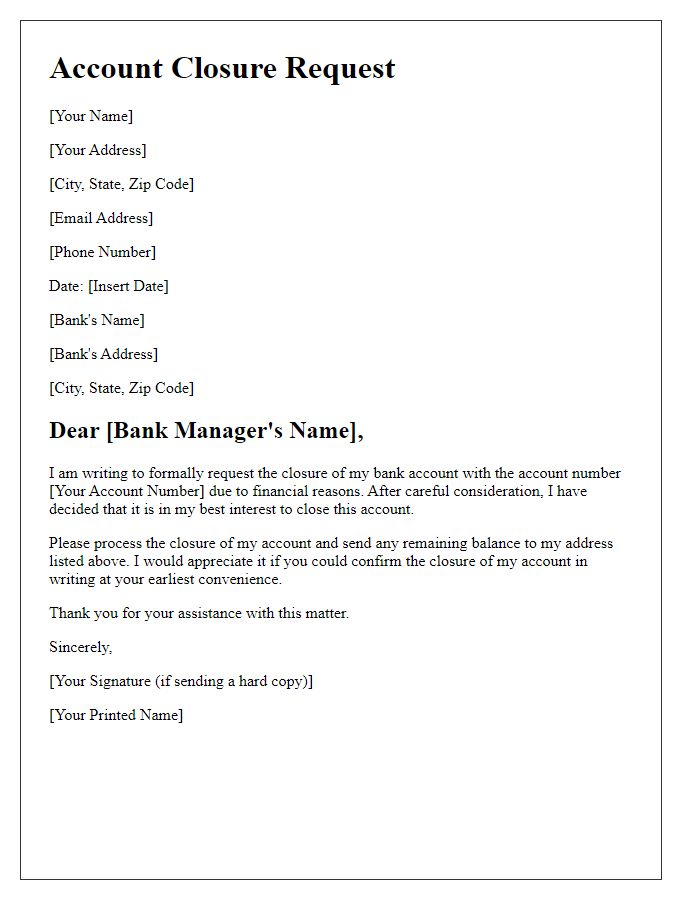
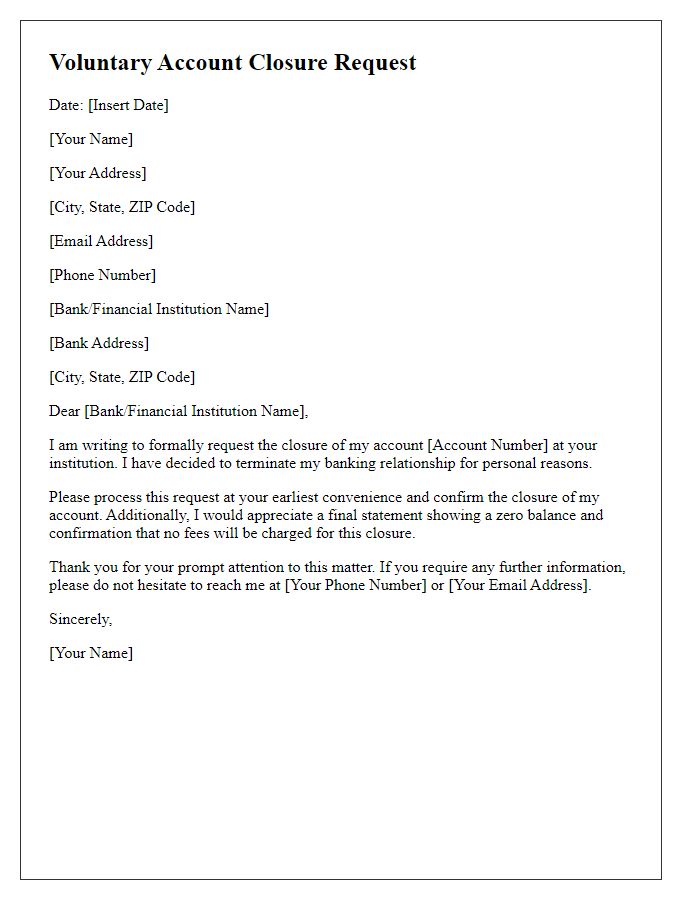
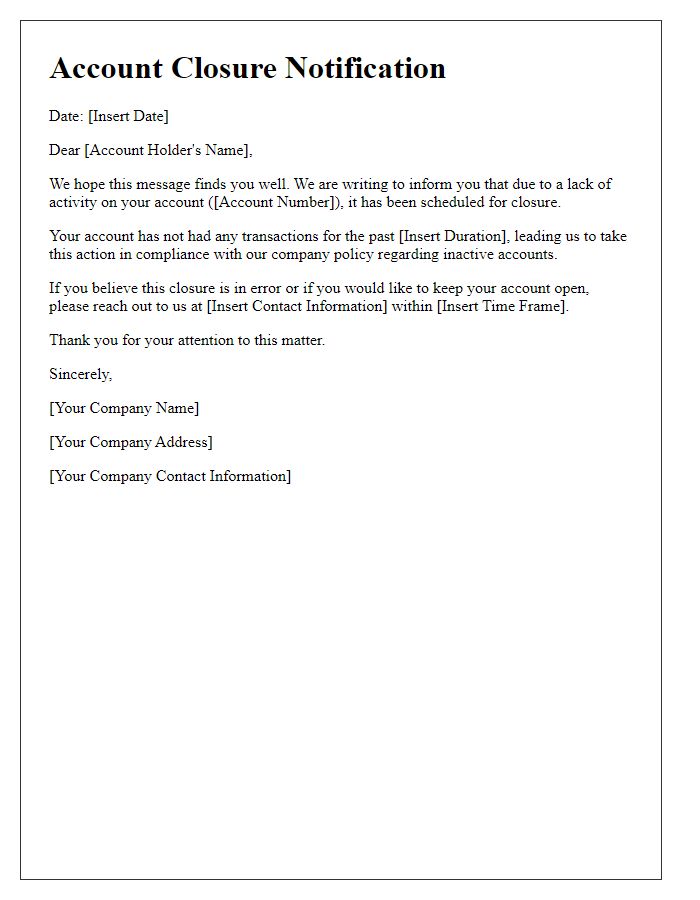
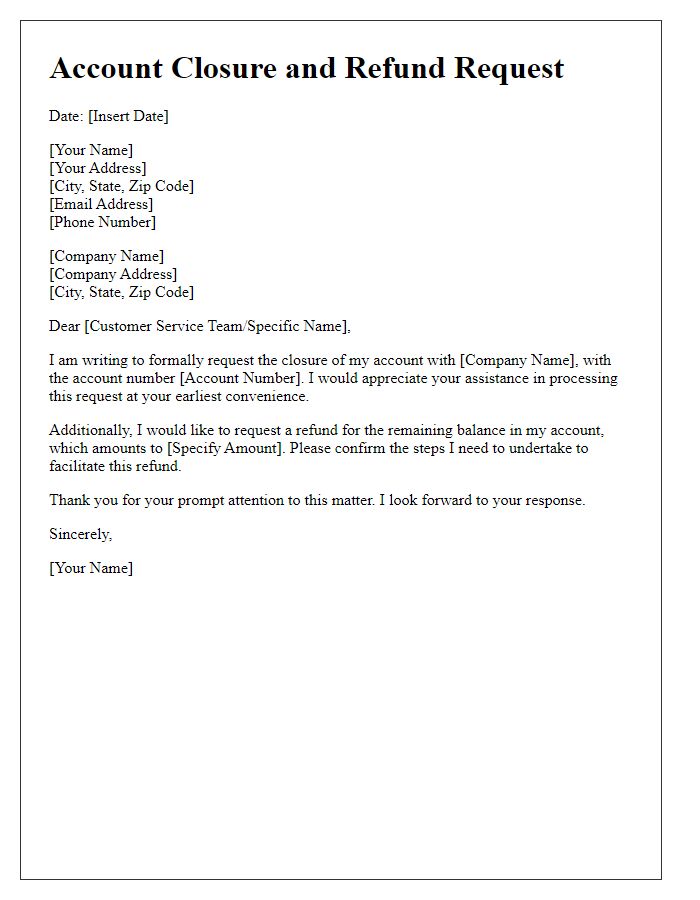
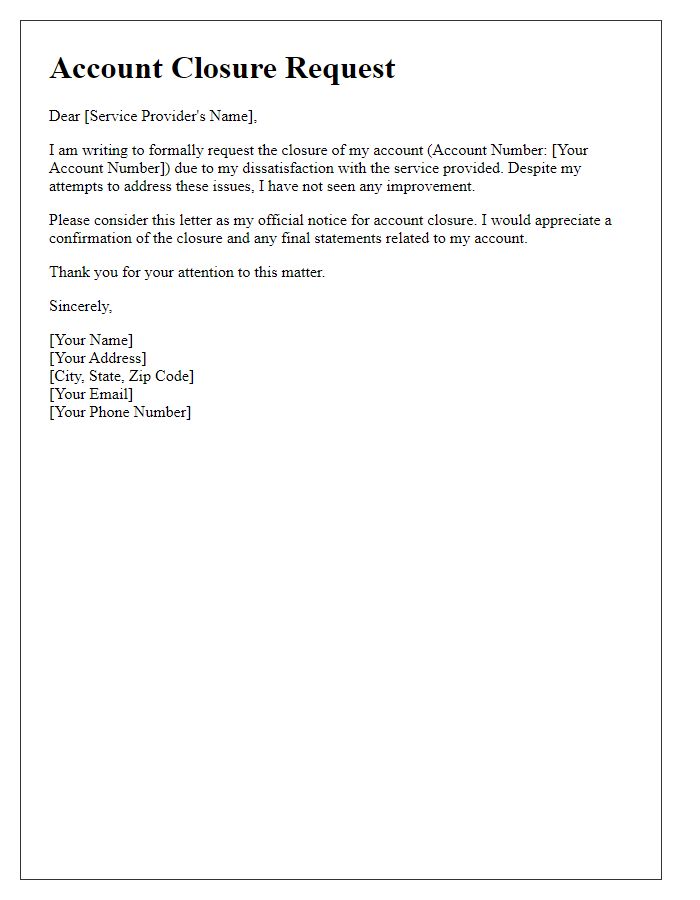
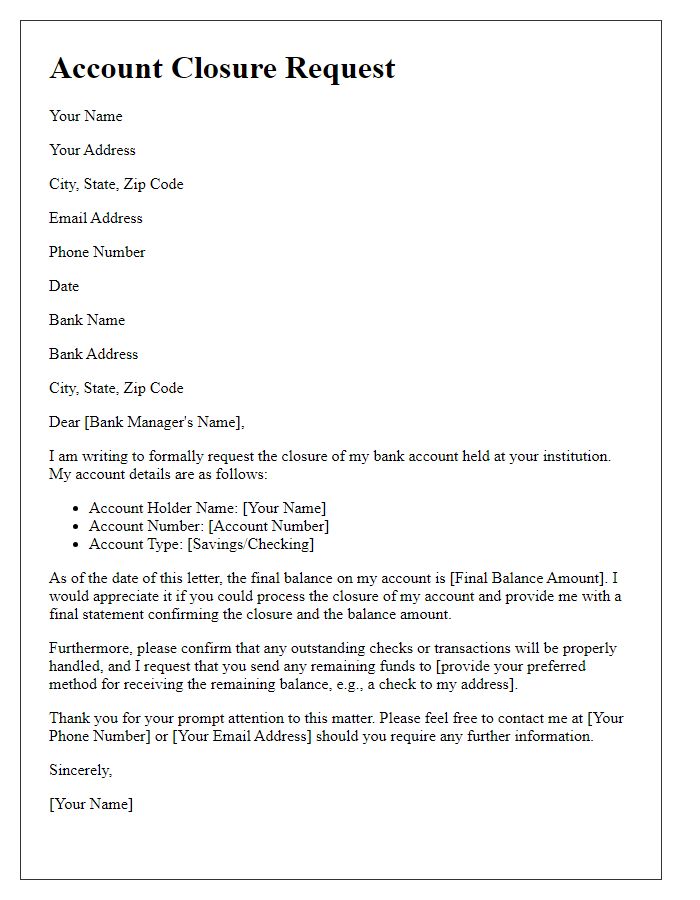
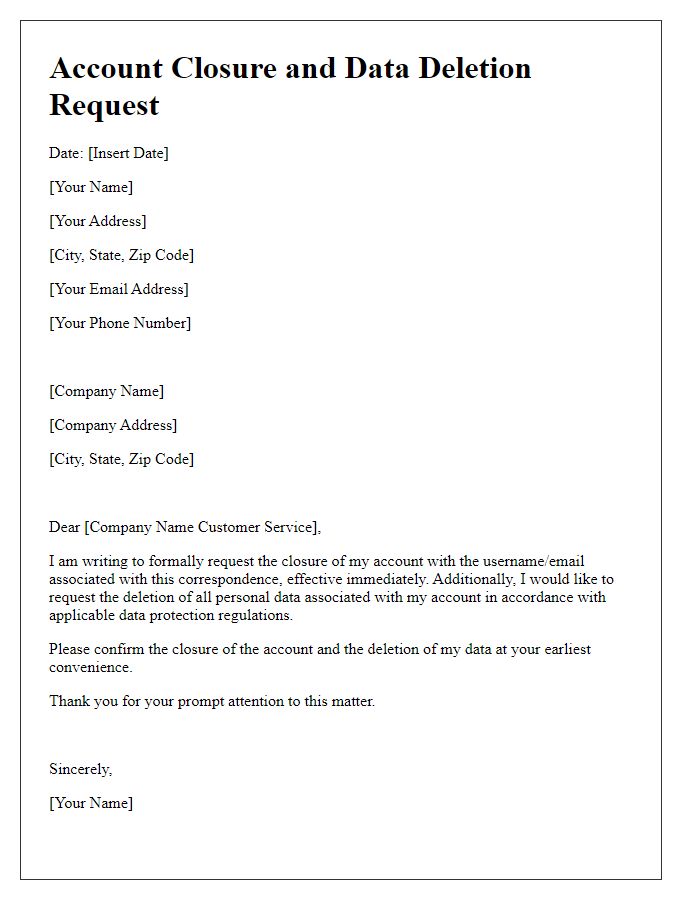


Comments